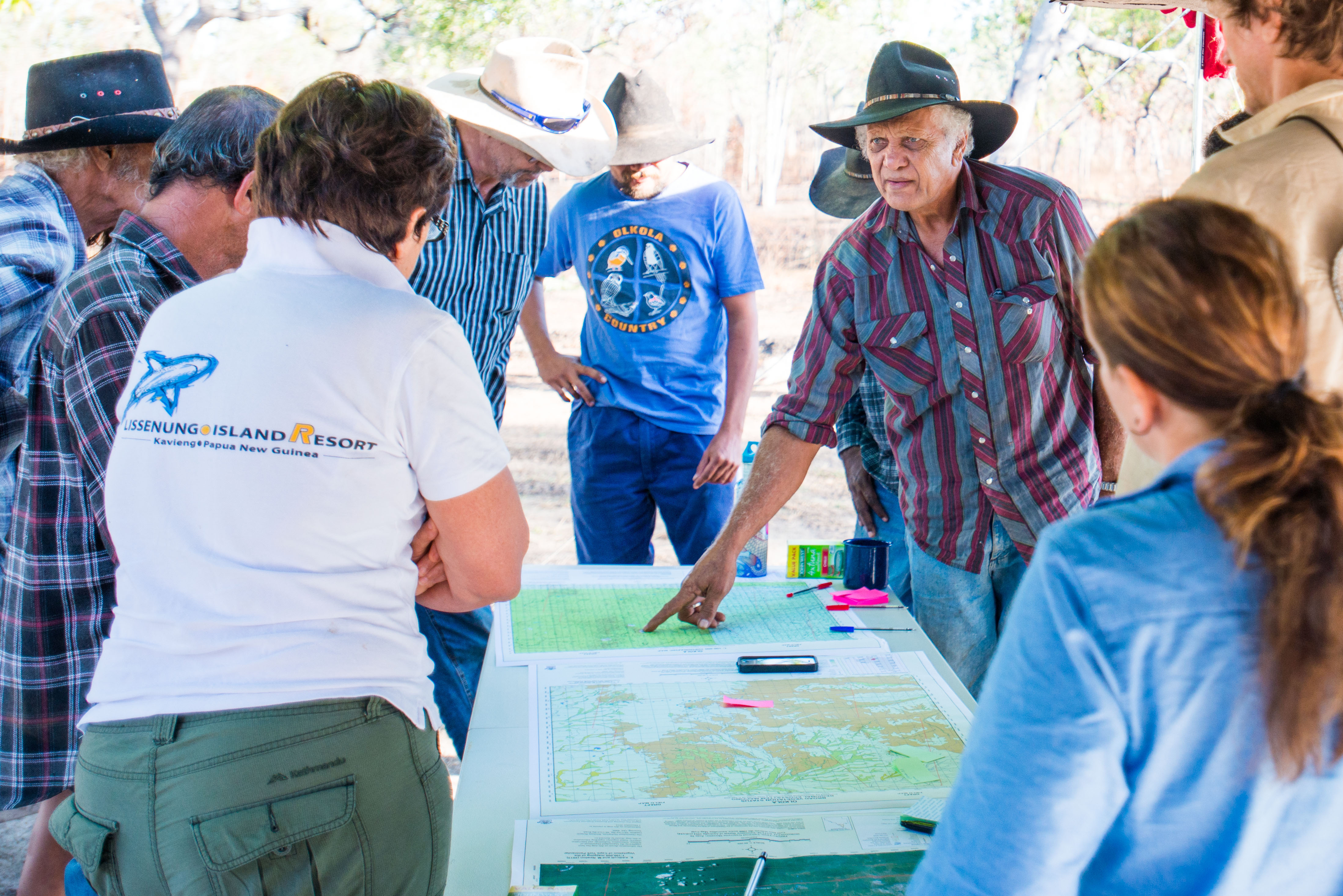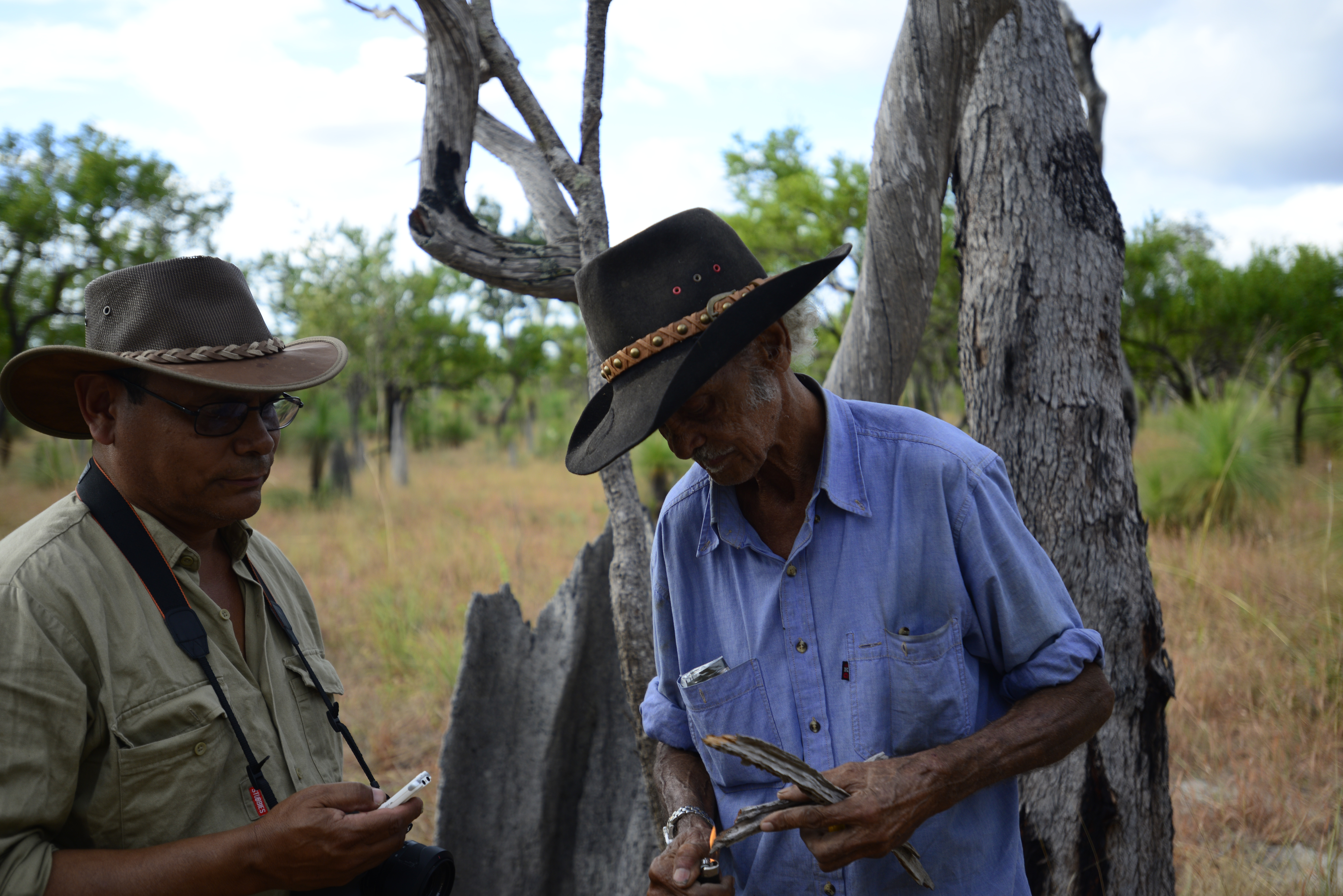The Olkola People of Cape York, CSIRO researchers, and the Tropical Indigenous Ethnobotany Centre (TIEC) are working together; using the Atlas of Living Australia (ALA) to explore ways to share and utilise knowledge to help care for country. The project is encouraging Traditional Owners’ aspirations to be on the country, with a focus on delivering benefits to all parties involved. This ALA-supported pilot project intends to build on past and current efforts of the Olkola people to record and secure their cultural resources and aims to combine traditional knowledge with the western science currently available in the Atlas.
** This blog post has been produced with the Olkola Aboriginal Corporation **
In the first week of June, CSIRO researchers, Olkola elders and rangers, and Gerry Turpin from TIEC met on Olkola country together, at Killarney station, recording knowledge, sharing knowledge, mapping plants and animals and beginning to discuss what sharing information about country might look like. The group was based at the Killarney station homestead where we camped and travelled from daily to visit story places on Olkola country identified by the rangers and the knowledge holders.

On the first day of our camp we talked about the pilot project. CSIRO researchers introduced the Olkola rangers and knowledge holders to the ALA, and talked about how we would work together during the week. Afterward we travelled to a nearby lagoon and to Maryanne Yard, where Brian and John Ross told us about some of the uses and preparations of cultural plants on their country. The CSIRO researchers were introduced to Olkola traditional uses of the quinine tree, kurragong and the fine leaf tea tree. The next morning we gathered together at the camp to reflect on what we saw and heard. We talked about the plants and animals at each place, and discussed what knowledge sharing might mean, and what the risks and benefits for Olkola would be. We repeated this exercise every morning before each trip out to visit places on country and record knowledge.
Some of the animals we were introduced to by Olkola elders included: freshwater crocodiles, a yellow spotted monitor, and many birds including the black breasted buzzard, the endangered golden shouldered parrots, white-bellied cuckoo shrike as well as the feral pigs. Some of the birds and insects we saw were at sites where the rangers were burning on country.

On this visit, a few of the Olkola Traditional Owners were returning to their country after more than 20 years. John, who was on the camp, was last in Killarney mustering for the station owner in the 1980s, when he was in his teen years; he had not been to parts of Killarney previously. He described his return as “real comfortable… this country belongs to my ancestors. Now it’s all given back to us, make(s) me happy here”.
Two more meetings are planned where CSIRO researchers will present their findings to the larger Olkola community, and a third meeting where Olkola people will decide what will be shared and if so, how they would like to represent their country.
The Atlas of Living Australia currently supports two Indigenous Ecological Knowledge pilot projects, learn more about their story from previous articles:
Indigenous Ecological Knowledge: The Olkola People
First ALA records of elusive Leichhardt’s Grasshopper in Arnhem Land